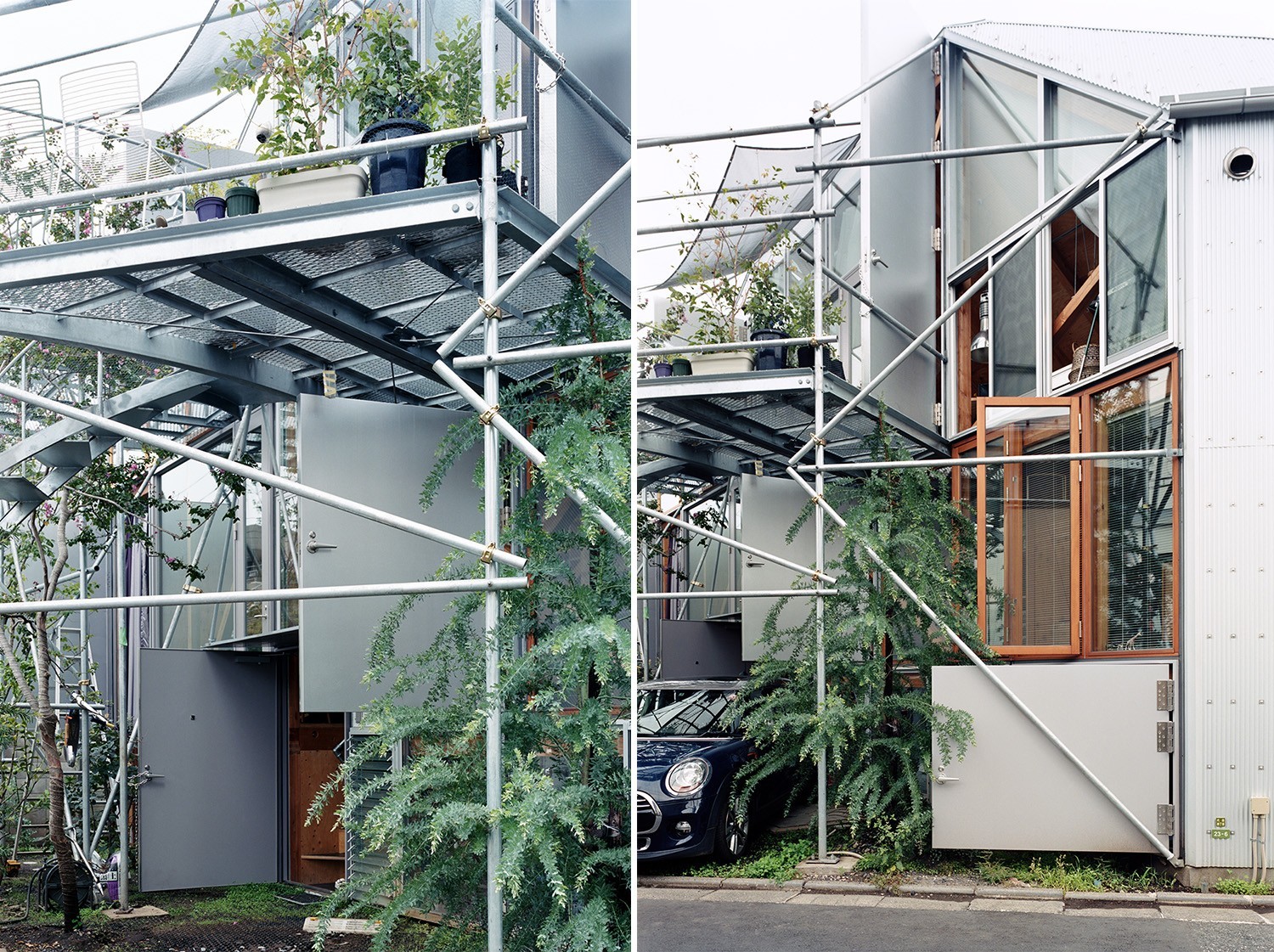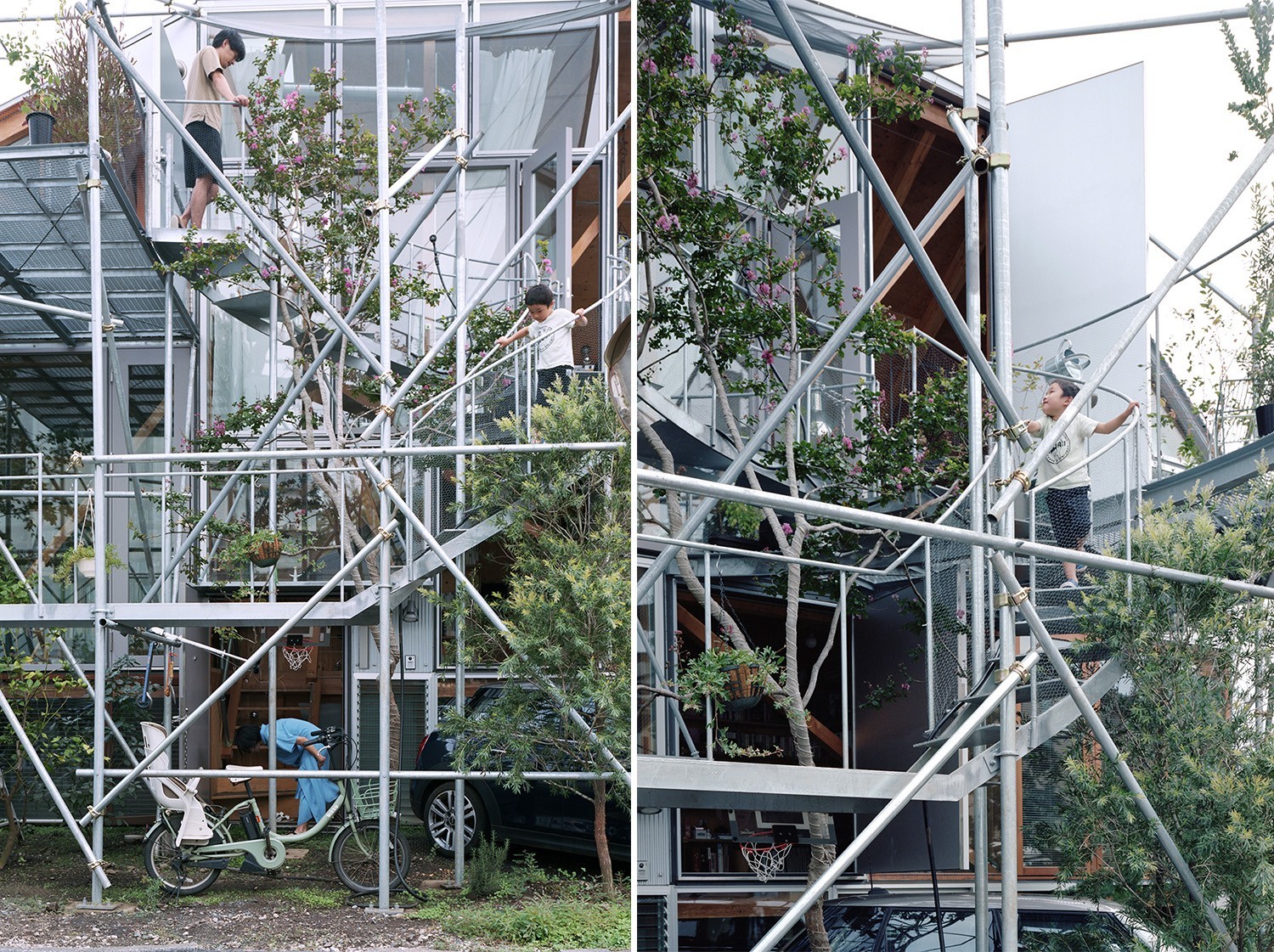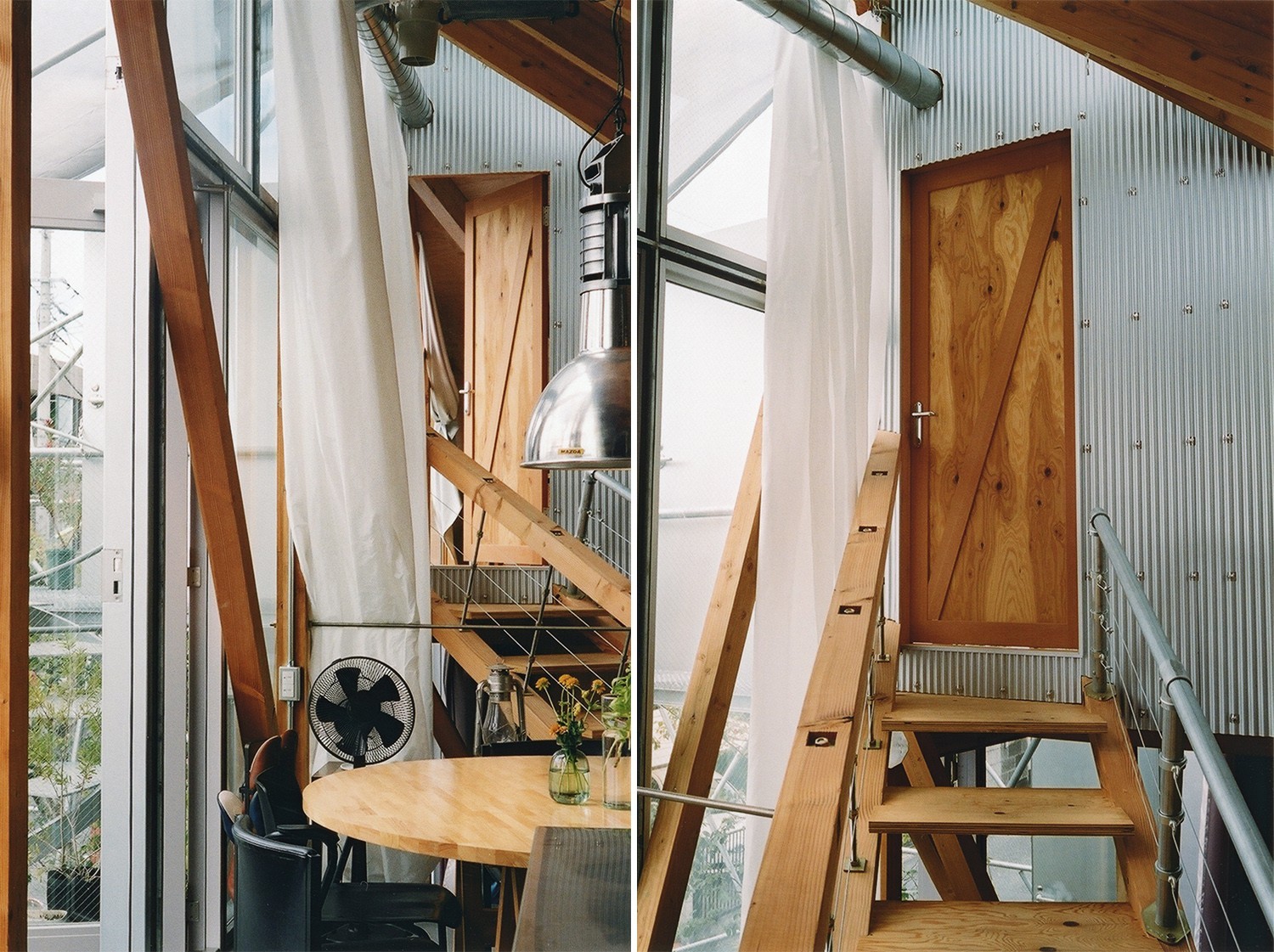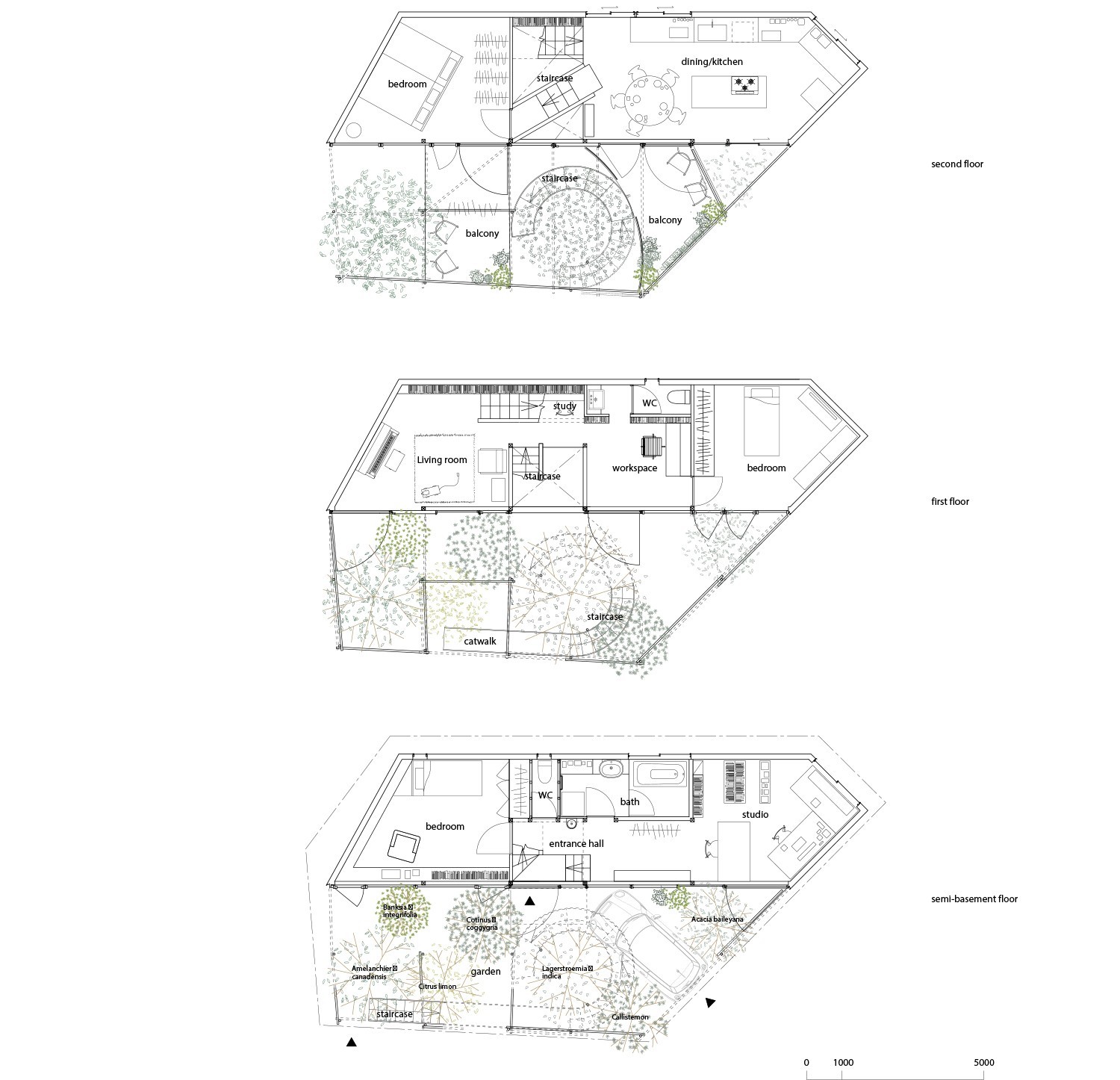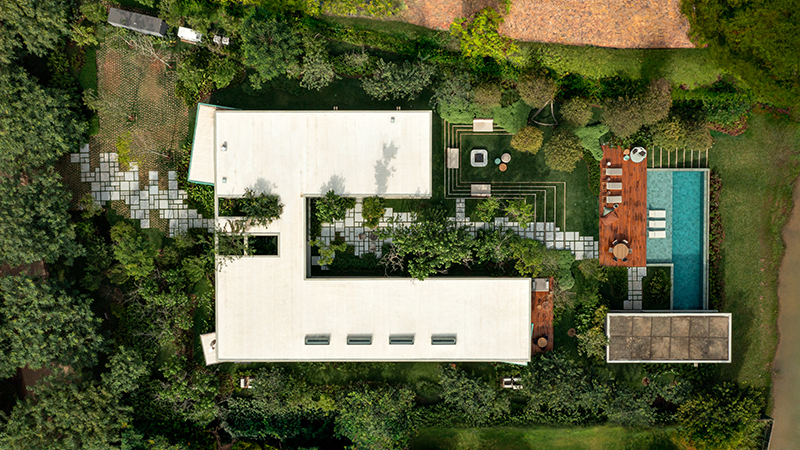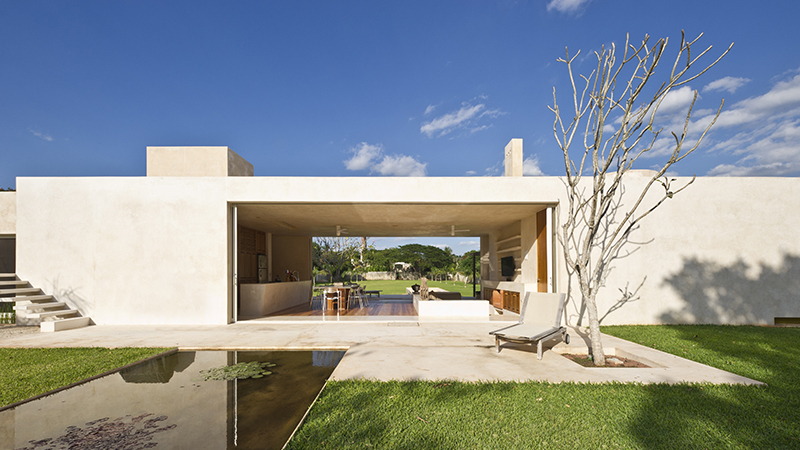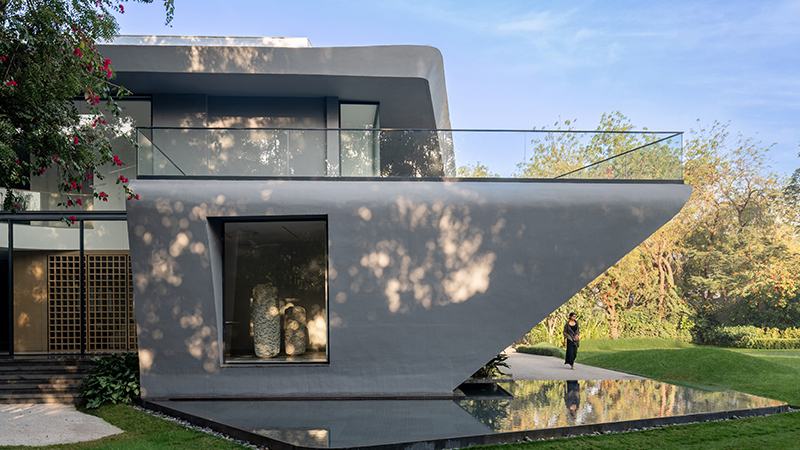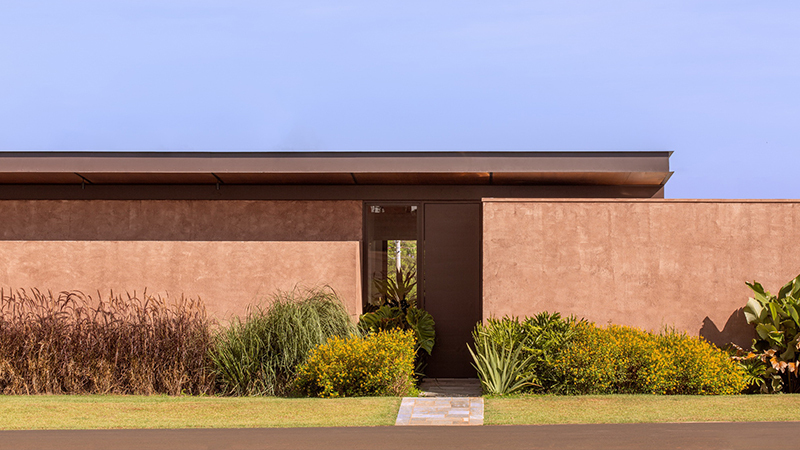| 公司: | Suzuko Yamada Architects | 类型: | 建筑 |
|---|---|---|---|
| 地区: | 日本 | 标签: | 别墅私宅 |
在设计这栋房子的时候,我想起了几年前去过的卢旺达森林。这是一片广袤的维龙加火山森林,卢旺达、刚果、乌干达三国的边界就在这里,野生的山地大猩猩在这里过着它们日常出行的生活。当我们在当地人的指引下追上一支大猩猩部队时,它们只是在森林的一片空地上,坐在柔软的灌木丛中休息。幼年的大猩猩在树上玩耍,在成年大猩猩中奔跑,而每只成年大猩猩则在草丛中惬意地坐着,梳理自己的身体,或者吃草和树皮,这就像是人类家庭在一个房子里的场景。它们在茂密的树丛中找到自己的位置,临时搭建了自己的房子,虽然没有围墙和屋顶,但树木、高草和爬山虎缠绕在一起,因地势不平而形成的重叠和轮廓,正围着居民的存在,形成一个舒适的密度,可以称之为房子,这就是大猩猩森林里的乡土建筑。
While designing this house, I remembered the Rwanda forest where I visited a few years ago. It is a vast forest of the Virunga Volcanoes, where the border of the three countries of Rwanda, Congo and Uganda is, and where wild mountain gorillas live their everyday lives as they travel. When we caught up with a troop of gorillas by the guidance of local people, they just sat down and rested among soft bushes in an open space of the forest. Infant gorillas played upon the trees and ran around among adult gorillas, while each adult settled comfortably in the grass, to groom themselves or to eat grass and tree bark. It was like a scene in a house. They found their places among dense trees and improvised their houses. Though there are no walls or roofs, trees, tall grass and creepers entwined with them, the overlaps and outlines created by unevenness of the terrain, were enclosing the presence of inhabitants, to form a comfortable density that can be called a house. This is the vernacular architecture in the gorilla forest.
如果有这样一栋房子在东京住宅区的一个小角落里,会怎样?有没有可能创造出这样一栋房子,用线性材料和物体层层叠叠地将光秃秃的生活柔软地围拢起来,塑造出各种深度,并且在这里远离阳光和街道上人们的目光?为了实现这个目标,我首先决定在房子内外彻底强调线性元素。
What if there is such a house, in a small corner of a residential area in Tokyo? Is it possible to create a house, where a bare life is softly enclosed with layers of linear materials and objects to shape various depths, and where is a little far from the sun and eyes of people in streets? In order to achieve it, I first decided to emphasize linear elements radically both inside and outside the house.
结构材料暴露在外面,从侧面可以看到接缝和结合的部分。房子和花园之间没有墙,而是由窗户和细木工组装在一起的复合体。除了方木、钢构件、柱子和单管梁、支架等结构元素外,还有楼梯、栏杆、窗框、家具、窗帘、书籍、衣物等杂物、树木、盆栽、自行车、浇水壶、铁锹,更有大量的书籍、录像带、DVD等居住者的录像制作作品,被散落在周围,塑造出不同的生活场景。层层叠叠的线条从建筑外到建筑内,交织在一起,让每个在此生活的人都能自由地生活,找到属于自己的休闲环境。
Structural materials are exposed so that joints and bonded parts can be seen from the side. There is no wall between the house and its garden, but a composite of windows and joinery assembled together. In addition to structural elements such as squared timbers, steel members, pillars and beams of single pipes and bracings, there are staircases, balustrades, window frames, furniture, curtains, books, clothing and other sundries, trees, pot-plants, bicycles, a watering pot, shovels, and moreover, a huge amount of books, video tapes, DVDs etc. of the resident's video production-work, being scattered around to shape varied scenes of life. Layers of lines are interwoven from the outside to the inside of the building, so that each inhabitant can live freely and find one's own relaxing environment.
▼项目空间分解 Explode Drawing
花园里,我选择种植了许多可食用的植物,如果树、香草、蔬菜,以及修剪时可作为插花的植物。我将生活空间和作为采摘平台的平台进行了延伸,在需要定期修剪的树木周围设置了楼梯,并在钢管框架内,沿着藤蔓生长的栅栏,在路边铺设了一条猫道。就像结构和物体在室内共存而不相互对立一样,我在室外规划了结构和植物,让它们聚集在一起。
For the garden, I selected many edible plants such as fruit trees, herbs, vegetables, and plants that can be used as cut flowers when pruning. I extended the living space and the terraces that serve as platforms for harvesting, put a staircase around trees that require regular pruning, and laid a cat walk by the road along the fence where vines grow, within the frames of steel pipes. Just as the structures and objects coexist inside the house without negating each other, I Planned the structures and plants to make a density together Outside.
考虑到成本、可维护性以及未来扩建和改造的可能性,我选择了木结构作为内部结构,而外部结构为钢结构。单根管子可以用夹子轻松地组装和拆卸,可以根据日常生活的需求进行定制,如更换门道、增加新的栏杆、设置植物支柱或晾衣杆来挂东西等。建筑和花园之间的边界根据每个房间的要求由铝、木和钢的窗框组成。有大小滑动窗、吊窗、单摇窗和百叶窗,通过窗帘的开合,房子流进花园,花园溜进房子,两个场景重叠,创造了一个像大猩猩森林一样舒适的生活空间。
Due to the cost, maintainability, future possibility of expansion and reconstruction, I chose wooden structure for the interior while the exterior structure is made of steel. Single pipes can be easily assembled and disassembled by clamps, so it is possible to customize according to demand of daily life, such as changing door ways, adding a new balustrade, setting a plant strut or a wash-line pole to hanging things. The boundary between the building and the garden is made up of aluminum, wooden and steel sashes according to the requirements of each room. There are large and small sliding windows, projecting windows, single swing windows and jalousie windows. By opening and closing these sashes, the house flows into the garden and the garden sneaks into the house, thus overlapped two scenes have created a comfortable living space just like a gorilla forest.
▼项目平面图 Plan
▼项目剖面图 Section
▼项目剖面图 Section
Project Name: daita2019
Architect: Suzuko Yamada Architects/ Suzuko Yamada
Location :Tokyo, Japan
Design years: from 2016 to 2017
Construction years: from 2018 to 2019
Structural engineers: TECTONICA INC. /Yoshinori Suzuki, Hinako Igarashi, Tokyo University of the Arts /Mitsuhiro Kanada
General contractor: Build Lab/Mitsuhiko Niihori
Structural system: Wood(inside), Steel(outside)
Major materials: galvanized steel sheet, glass, exterior / plywood, interior
Site area: 109.69m2
Building area: 62.75m2
Total floor area: 138.50m2
Photo Credit: yurika kono
更新日期:2020-09-03 16:43:46
非常感谢 Suzuko Yamada Architects 带来的精彩项目, 查阅更多Appreciations towards Suzuko Yamada Architects for sharing wonderful work on hhlloo. Click to see more works!









